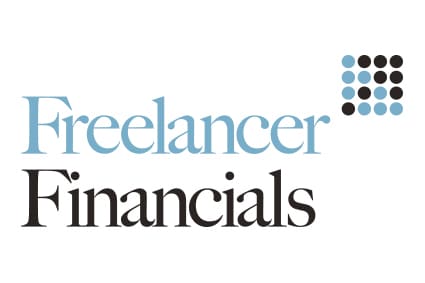Understanding the pitfalls of marginal tax rates
An individual’s marginal tax rate is the amount of tax they will pay on an extra £1 of income. For example, for a contractor earning £70,000 p.a – their marginal tax rate may be 40% because for every extra £1, it will cost them 40p in income tax. That rate increases further if you take into account the employees NIC they will have to pay as well.
Depending on an individual’s circumstances and the type of taxable income a person is in receipt of, certain income sources can distort marginal tax rates. Dividend income, for instance, produces a lower marginal tax rate than salary.
Those people who normally pay tax at the basic rate on their income will notice that their marginal rate essentially doubles if their income exceeds the higher rate threshold of £46,350 (£34,500 basic rate band + £11,850 personal allowance) in this current tax year. An employee’s aggregate marginal tax rate, which includes NIC, softens the impact of an increase from 32% to 42% as NIC falls from 12% to 2% at the same threshold of £46,350.
This threshold can be extended by making personal pension contributions and/or gift aid donations. Whilst both of these payment types are deemed to be paid net of basic rate tax, they qualify for higher rate tax relief and the way that is given by HMRC is to extend the basic rate band. A net pension contribution therefore of £4,000 (£5,000 – £1,000 basic rate tax relief) would increase the higher rate threshold to £51,350 (£46,350 + £5,000 gross pension premiums).
Personal allowance restriction
Where income exceeds £100,000 in a tax year, then the personal allowance is reduced by £1 for every £2 above this threshold until it disappears completely where income hits £123,700. This, in turn, increases the effective marginal rate to approximately 60%.
Example
Jason receives a salary of £100,000. He is then offered a bonus of £10,000 which will have the effect of Jason losing £5,000 of his personal allowance, thus exposing more of the bonus at 40%. Jason will therefore pay £6,000 additional tax (£10,000 + £5,000 x 40%) and additional NIC of £200 (£10,000 x 2%), leaving only £3,800 in his hand. This amounts to a hefty effective tax rate of 62%.
As dividends are taxed more favourably, had Jason been rewarded with a dividend of £10,000 rather than a bonus, then this would reduce the effective tax rate to 48.75% as follows:
£10,000 (assume dividend allowance of £2,000 already used up) + £5,000 (lost personal allowance) x 32.5% (higher rate for dividends) = £4,875 additional tax. Remember that dividends do not attract NIC.
Savings allowance
Once a person moves into the higher rate tax band their savings allowance is halved from £1,000 to £500, and disappears completely when their income exceeds £150,000 and makes them an additional rate taxpayer.
Example
Hayley receives an annual salary of £45,350 and building society interest of £1,000. As she remains a basic rate taxpayer, then her savings allowance remains intact, leaving her interest tax-free. Her total tax and NIC liability for 2018/19 is £11,131.
However, had Hayley been in receipt of, say, a benefit-in-kind of £20 from her employer that tipped her gross income into the higher rate, then she would lose half her savings allowance.
Her tax and NIC liability then increases by £104 to £11,235, giving rise to an effective marginal rate of 520% on the benefit of £20! She is therefore in a much worse position than had she not been in receipt of the benefit.
Had the benefit-in-kind been, say, £500 rather than £20, then the marginal rate would have been reduced to 40%.
Marriage allowance
The marriage allowance allows an individual, who is married or in a civil partnership, to transfer £1,190 of their personal allowance to their spouse or civil partner provided:
- the transferor is not liable to income tax or not liable above the basic rate for a tax year; and
- the transferee is not a higher rate taxpayer.
This reduces their tax by up to £238 in the tax year.
The allowance is lost completely once either spouse’s income jumps into the higher rate band. So, just like the example of Hayley, a small increase in income can have a significant tax impact.
High income child benefit charge
An income tax charge applies to a person who is entitled to child benefit (or whose partner is entitled to child benefit) and whose adjusted net income exceeds £50,000 in a tax year. Where both partners have income exceeding the limit the charge applies to the partner with the higher income.
The charge is equal to 1% of the amount of child benefit for every £100 of net income above £50,000, and is on the full amount of child benefit where net income exceeds £60,000.
The marginal rate will therefore depend upon the amount of child benefit received.
Example
Joe and Sophie are both IT contractors and are married. They have three young children for which Joe receives £2,500 in child benefit in 2018/19. Despite Joe receiving the child benefit, a high-income charge is made by reference to Sophie’s income as she earns more than £50,000 p.a.
Sophie’s normal marginal rate of tax is 40% but with the child benefit charge this climbs to 65% (ignoring NIC).
Other factors
Where an individual’s adjusted income exceeds £150,000, this can significantly restrict tax relief for pension contributions and give rise to a considerable tax charge.
Student loan charges will increase in step with income, and tax credits and universal tax credit will also be affected.
It is important, therefore, not only to bear in mind the tax impact of the more material increases in income but also the small ones too which can have a sting in the tail.






Understanding the pitfalls of marginal tax rates is important for almost every single entrepreneur. Follow http://english-essay-writing-help.org/blog/page/4 to get familiarized with our pivotal direction!